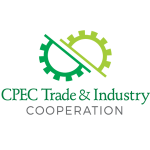Executive Summary
China remained one of the top economies of the world, with respect to trade volume it is the first largest exporting and the 2nd largest importing country. Manufacturing sector is the key trading sector (imports and exports) of China which accounts for 94% of its total exports and about 65% of its total imports. Prime trading partners includes USA, the largest destination constitutes 18.5% of total exports of China and EU the largest supplier covers 10% of China’s total imports. China has opened 32% of its economy whereas USA and EU have opened their economies around 19% and 64% respectively.
This study has also analyzed the trade between China and Asia. In Asia, Pakistan is 13th largest trading partner with respect to trade volume with China. China exports 58% of Electrical Machinery, code 85 to Asia and imports 67% of Electrical Machinery from Asia as well. Major trading regions from Asia are East and South East Asia.
From South Asia Association for Regional Corporation (SAARC) countries, India is the first and Pakistan is the 2nd largest trading partner of China. Major imports of China from this region are Pearls, gems and Cotton. Pakistan is the 3rd largest supplier of cotton to China. Pakistan is blessed with abundant natural resources and cotton is one of them. Some of the other abundant natural resources which have potential of export to China includes Rice, Salt, marble, Copper, gems stones and gold, all these reserves have significant potential to capture the China’s market.
Comparison of tariff rates for different tariff lines under FTA of China with Pakistan and Association of Southeast Asian Nations (ASEAN) countries is also made and it is found that
ASEAN countries have much low tariff rates than Pakistan therefore offering a tough competition to Pakistan. FTAs of China with other countries of the region are also under negotiation and some are under consideration which may intensify the competition especially for Pakistan.
We are only able to export 3.3% of agreed tariff lines under FTA to China. We exported raw and semi-finished goods to China and ASEAN successfully captured the China’s market through offering value added goods. We were not able to capitalize on FTA with China due to lack of capacity to add value.
We should encourage industries for value addition and negotiate with China for market access for our competitive products like textile, fruits etc. We have to also look for the tariff concession China will offer under new FTA with other countries in the region to prepare ourselves to compete.
Keywords
Trade Pattern, EU, Prime Trading, SAARC
Author Information
- Dr. Ahsan Abbas, Senior Research Fellow CPEC Trade and Industry Cooperation Centre of Excellence CPEC
- Saira Ali, Research Associate Socio-Economic Impacts of CPEC, Centre of Excellence CPEC

 English
English 中文
中文












